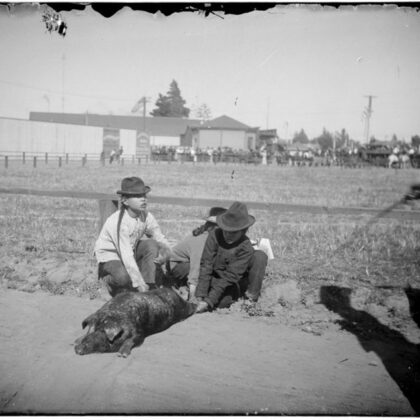New method of predicting feed digestibility
The animal article of the Month for May is entitled ‘Predicting feed digestibility from NIRS analysis of pig faeces’
The valorization of a feed resource within an animal species depends on its intrinsic physico-chemical characteristics, but also on its actual utilization by the animal to which it is offered. However, the characterization of feeds is often done through their potential value (e.g. digestibility of nutrients) without considering the variability of animal responses.
It has been shown that the digestibility varies with several parameters such as the age or weight of animals, their genetic background (breed, strain, and individual variation), the technology implemented for feed preparation, etc. Digestibility measurement by itself is quite heavy and expensive and may generate welfare issues, particularly with large animals such as pigs and it requires quantitative collection of faeces from individually caged animals and their chemical analysis. In the case of studies requiring a large number of individuals (typically genetic studies), the work becomes unrealistic. Simplified methods involving digestibility markers exist but they still require a significant analytical work and their accuracy may remain insufficient. Near infrared spectroscopy (NIRS) on faeces samples is an alternative approach which has been successfully tested in poultry for digestibility measurements but never in pigs. It requires a calibration phase, after which it allows a rapid prediction of samples properties.
We tested the possibility to use NIRS on feces samples for the prediction of digestibility in growing pigs, taking advantage of samples from an experiment in which 200 digestibility trials had been performed with the same feed but on animals with different genetic background and at successive body weights (30 to 95 kg); this latter factor is usually associated with a regular increase of digestibility coefficients. All the variation observed was therefore linked to the animal body weight and genetic factors of variation, without any interaction with feed characteristics. The prediction of digestibility parameters (organic matter, nitrogen, energy) was satisfactory, with a prediction error around 1% for the digestibility coefficients and 200kJ/kg for digestible energy content.
On the short term, this trial shows that it is possible to use NIRS on pig faeces samples to quantify routinely the digestibility differences between many animals, with considerably simplified experimental conditions compared with classical measurements: short duration of experiments and analytical work reduced to sample drying and grinding. Spectral measurement itself requires only a couple of minutes.
On a longer term, it can be planned to build more generic calibrations, based on a wide range of feeds, which would allow using this technique to assess the digestibility of feeds and raw materials and to study the factors of variation of digestibility. Trials could be performed in experimental stations with simplified experimental procedures, but they could also be developed in farms, with the objective of sticking to the actual utilization of feeds by the animals, in real rearing conditions, which represents the ultimate objective of precision feeding.
This article is freely available for one month
Authors: D. Bastianelli, L. Bonnal, Y. Jaguelin-Peyraud and J. Noblet
The animal Article of the Month is selected by the Editor-in-Chief and is freely available for one month






